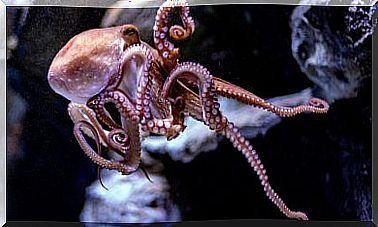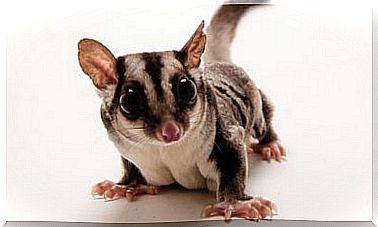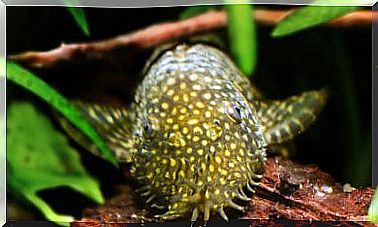Puma: The American Predator
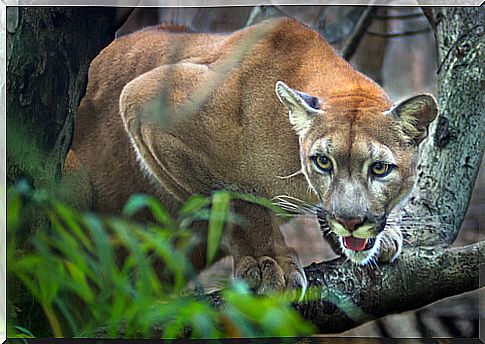
The cougar, also popularly known as the ‘American lion’, is one of the largest predatory felines on the entire planet. His body is perfectly adapted to reach high speeds and perform wide jumps, becoming an excellent hunter.
Currently, this species is at risk of extinction in many countries where it is indigenous. Next, we will get to know the cougar better, its characteristics, behavior and habitat.
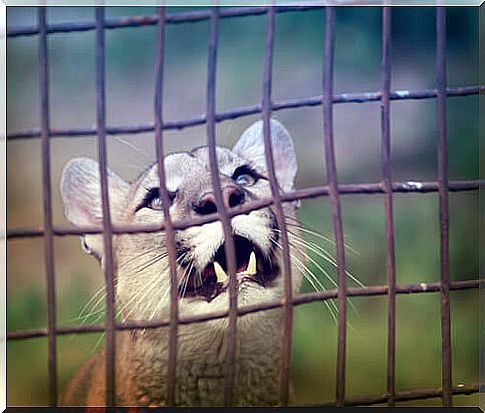
The cougar: physical characteristics and taxonomy
The puma or ‘mountain lion’, whose scientific name is Puma concolor , is a carnivorous mammal belonging to the felidae family. Its body is long and robust, covered by an even and uniform coat in shades of brown or gold. Its head is round and its ears are always well erect. Its legs are powerful and muscular, with five claws on the front limbs and four on the back.
The body of an adult male cougar can reach 2.8 meters in length and weigh between 90 and 120 kilograms. However, this species has a certain sexual dimorphism: females are smaller and lighter than males. A female specimen is between one and a half and two meters long and has a body weight of less than 80 kilograms.
Their hind legs are noticeably larger and more muscular than their front legs. This allows them to perform really wide jumps and gain impressive speed for short races. While its horizontal jumps usually exceed 10 meters, the vertical impulses can register six meters high.
Like most cats, cougars are also capable of dexterity and speed. On many occasions you can see a specimen while it rests or watches over its surroundings on top of a tree.
An impressive adaptive capacity if we take into account its size and weight. The great size, intelligence and hunting ability have made the puma one of the most powerful predators on the planet. Their life expectancy is between eight and thirteen years.
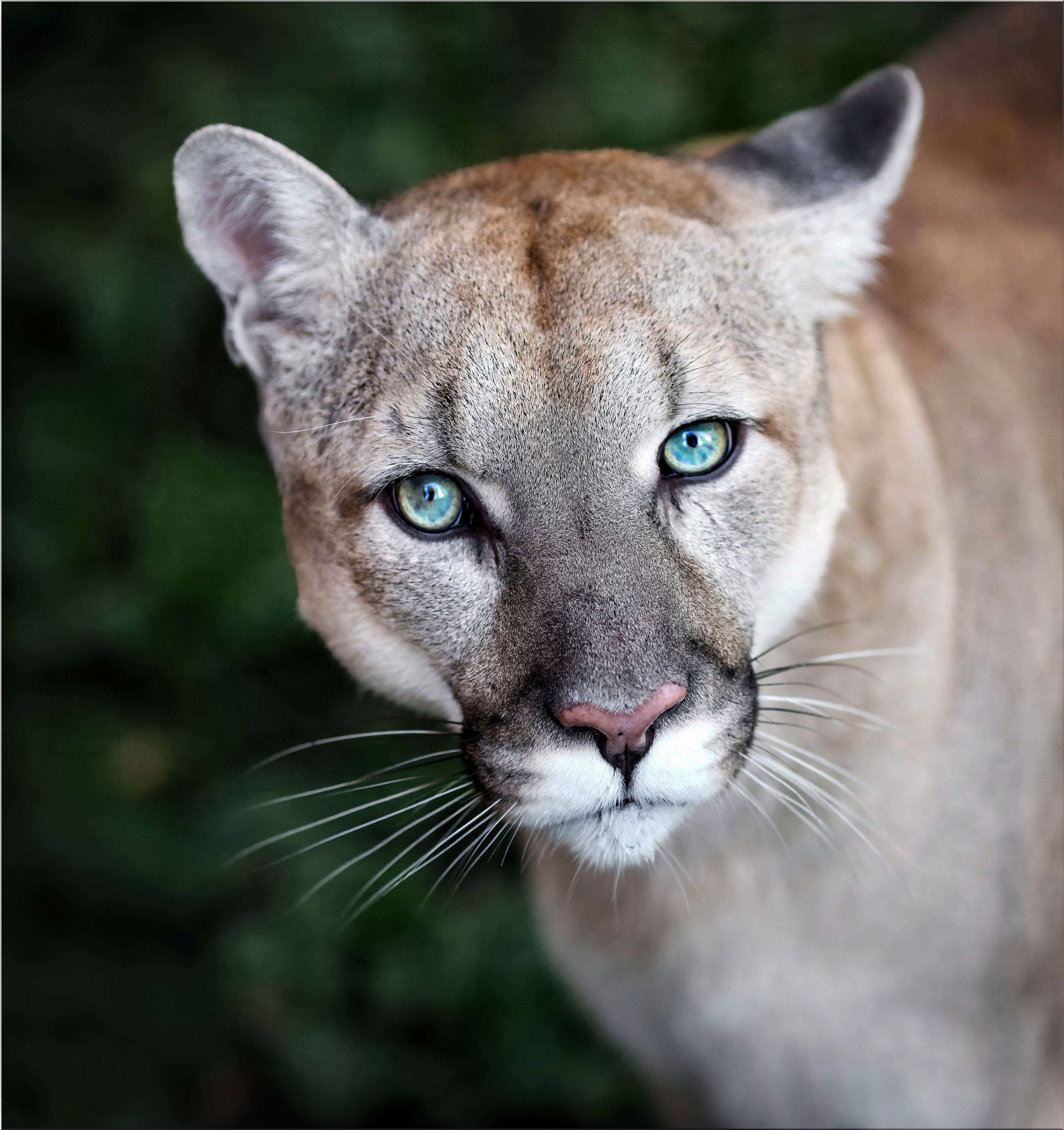
Natural habitat of pumas
The puma is an autochthonous feline of America, which predominantly inhabits the southern part of that continent. They prefer to live in mountainous or jungle regions, with temperate climates and good food availability.
Originally, they were in Argentina, Brazil, Chile, Colombia, Costa Rica, Paraguay and Uruguay. In Argentina, pumas are officially listed as Least Concern (LC). However, the species was totally extinct in many provinces of the country.
For this reason, some areas are being repopulated, such as the provinces of Corrientes and Entre Ríos and also in Patagonia. In addition, the pumas are protected thanks to the creation of National Parks, recognized by local legislation.
Cougar feeding
As originally inhabited regions of abundant fauna and flora, the pumas used to preserve a very varied diet; in fact, they are the felines with the greatest dietary diversity. Although they are predominantly carnivores, they also tend to consume certain vegetables. In addition to supplementing your diet, vegetables provide fiber and facilitate digestion.
A cougar can hunt large prey, such as deer, elk, and sheep, but also small animals such as hares, mice, or porcupines. In addition, they are also capable of catching tiny insects when hunting seems insufficient or difficult to capture.
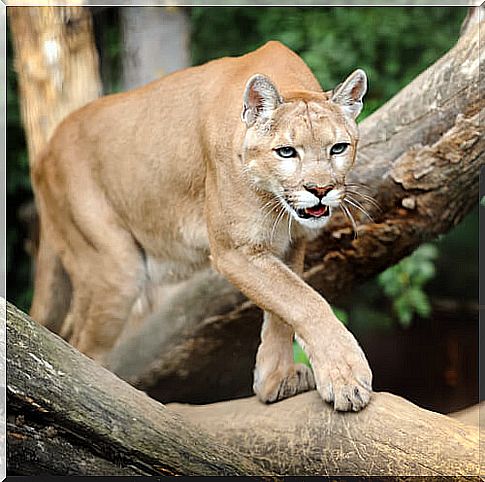
Cougar habits
As a good feline specimen, the puma maintains solitary habits and is very territorial. Sexually active males and females are often brought together only for breeding purposes. However, some females may form small groups to protect their young and ensure their food.
Cougars are also known for their hunting strategies. To catch their prey, they make a sophisticated ambush and always keep behind the other animal. Thanks to their retractable pads and nails they can move forward silently and jump just at the right moment. Then, they use their claws to immobilize and bring down their prey.
Once the prey has been mastered, this big cat takes its body to a safe place to feed peacefully. They normally catch large animals every 15 days, but they can increase their hunting frequency to feed their cubs.
The cougar is a sleepy animal during the day and spends long hours resting among the branches of the trees. Its activity increases at dusk or before dawn, in the early morning, when the sunlight is dimmer.
